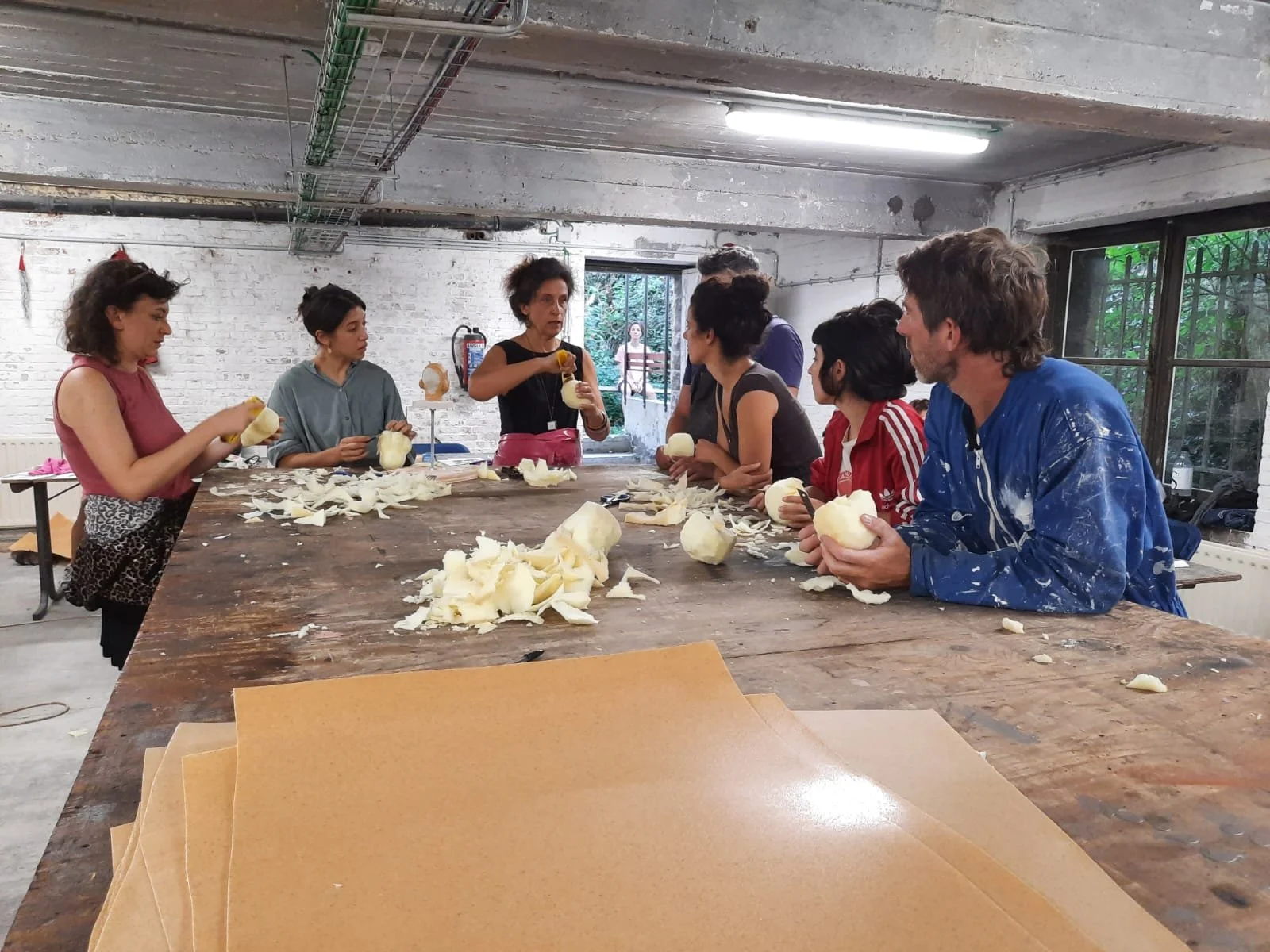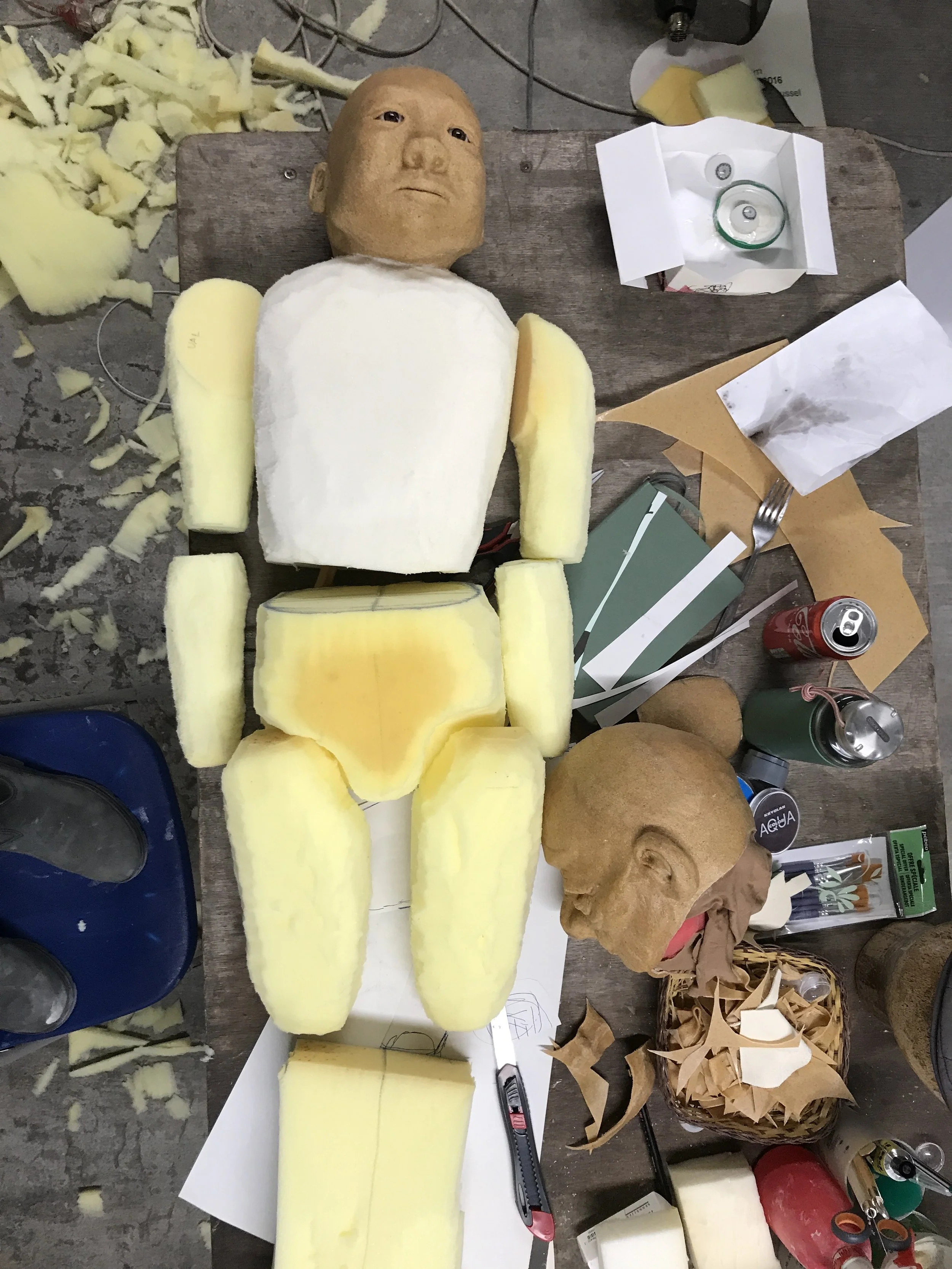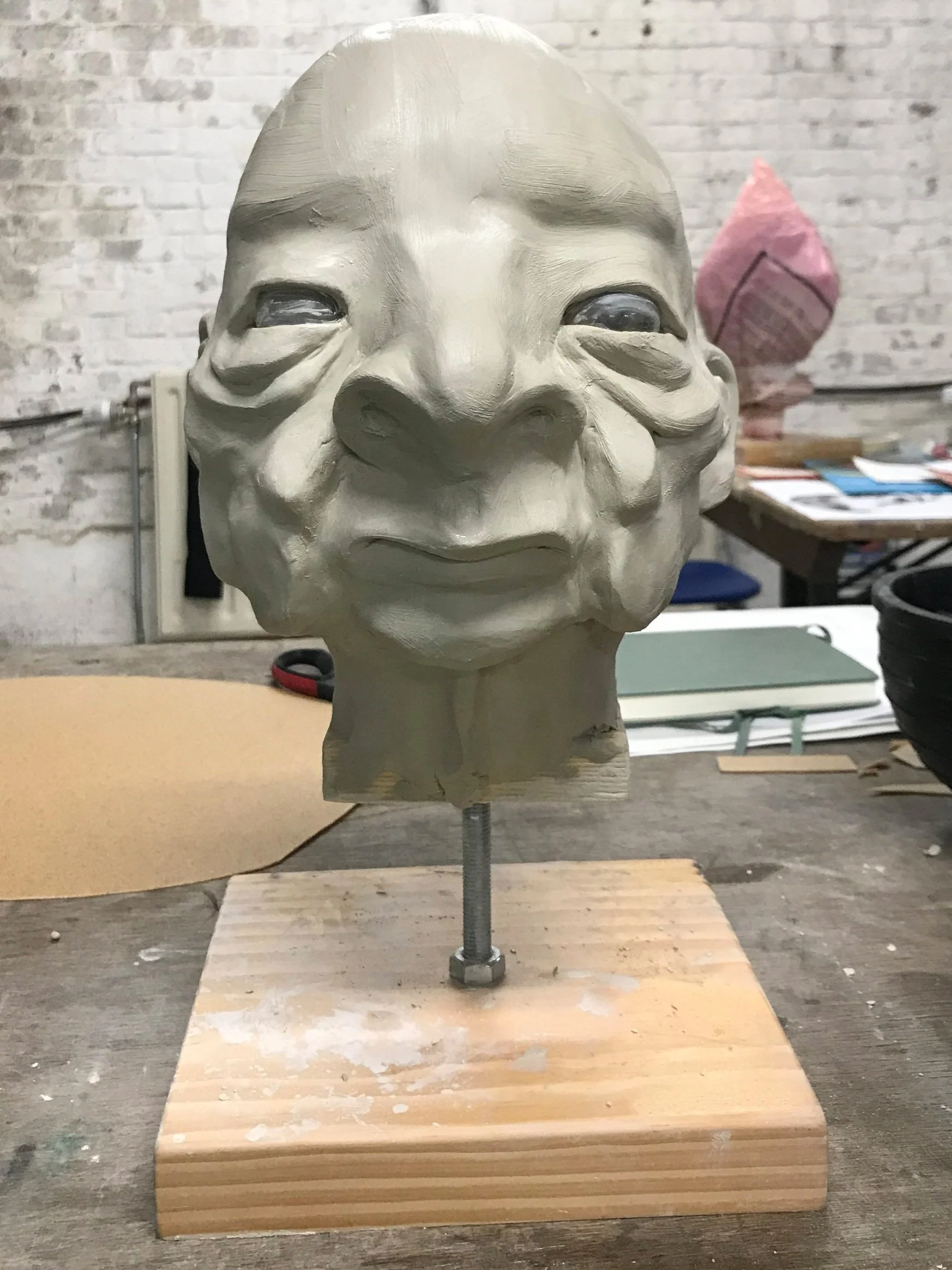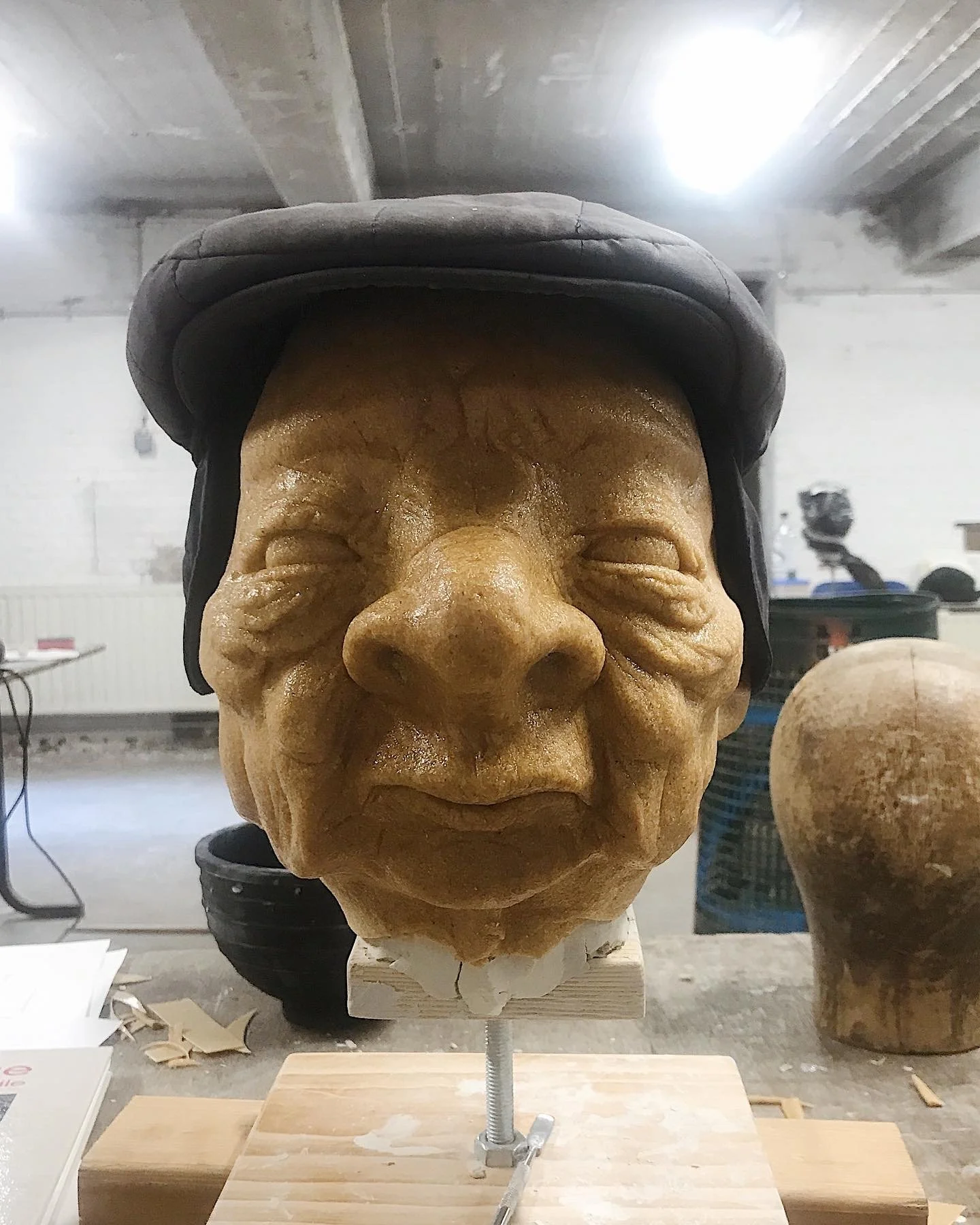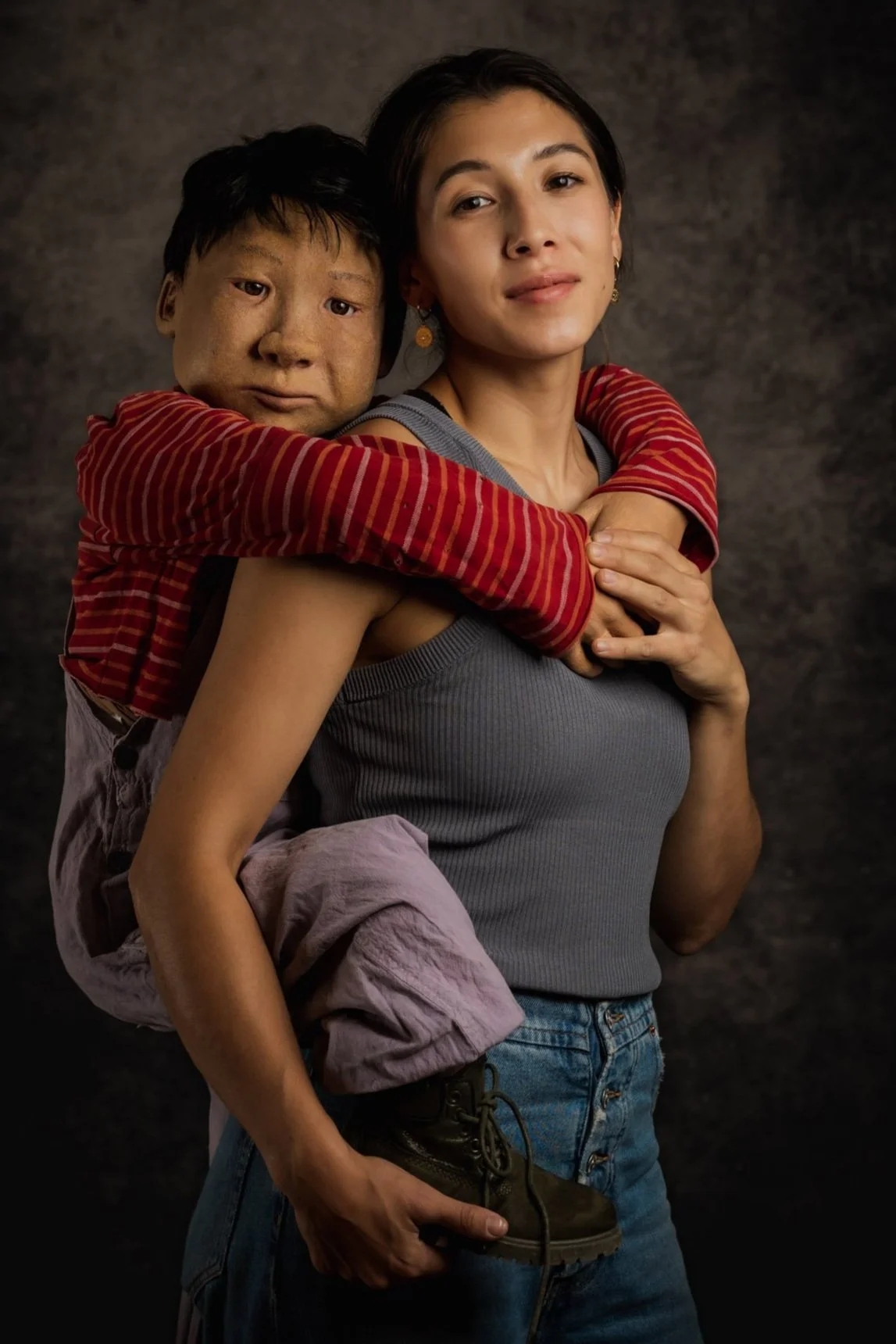Bewildered Anew
/LʼAUTRE
by Lei-Lei Bavoil
(Recent recipient of an UNIMA-USA Study Abroad Scholarship)
When I found myself in the audience of Loco at the Festival Mondial des Théâtres de Marionnettes in Charleville-Mézières, I had been working as a puppeteer for some years, and as an actor for some more. That is to say that even though Iʼm still early in my career, as an audience member, Iʼm not exactly innocent to the tricks of the trade. But as I sat and watched Tita Iacobelli and Marta Perreira flit around the stage with the puppet made by Natacha Belova, I became once more a child before a birthday party magician. Or rather, a birthday party magician before a real wizard. It reminded me of the first time I saw puppetry as an adult – that day, I was enraptured by how vivid those characters were; it looked like magic, and I sat in awe of the puppeteers who were making it all happen. But there, in the audience of Loco, I was bewildered anew. The magician before the wizard, the house cat before the lion, the bell pepper before the hot sauce. When the opportunity arose to learn from the wizards themselves, I sprang.
The company, Belova-Iacobelli, is based in Belgium, though Natacha and Tita are from Russia and Chile respectively, and Marta, their collaborator and Natachaʼs studio assistant, is Brazil born. They were offering a workshop entitled “LʼAutre” or “The Other” which would entail a two week exploration of the gray space between the puppet and its puppeteer. I applied simultaneously to both the workshop and to UNIMAʼs Study Abroad Scholarship, and had the great fortune to be accepted by both.
The workshop description states:
“Starting from a text or an image where we can see « the other » or « others » who challenge us, who provoke us, who modify our breathing, through the construction of a puppet and manipulation techniques, we will try to assimilate the presence of this « other ».”
This theme spoke to the exact feeling that I had while watching Loco, where the presence of the puppeteer was not just assumed, not just visible, not just functional, but something else. Something other. I remembered my Balinese mask classes in college, where the image stored within the mask would travel down my spine and infect my cells. As we were taught, it was not me who moved the mask, but something other. I wanted to dive deeper into this question with puppetry.
Before the workshop, the participants were encouraged to arrive with some inspiration - text, images, stories, or projects in progress. On day one, we arrived at Espace Zinneke, a bric-a-brac artists collective with communal gathering space, workshops, rehearsal rooms, and a basement stuffed to the teeth with a creatorʼs dream of recuperated materials. We were an international bunch - thirteen participants hailing from Spain, Argentina, Belgium, France, Russia, Israel, and the United States (that was me). Natacha Belova and Tita Iacobelli introduced themselves, their backgrounds and work, and we all translated for each other. Between French, English, Spanish, Russian, and a decent amount of miming, we hopped over the various language barriers with relative ease.
For the work ahead, Natacha insisted on a laboratory process. This was a chance to explore our personal universe, our projects, our visions. She, Tita, and Marta, would provide construction techniques, materials, manipulation tips, exercises, and perspectives. They sought not to impose their universe upon our own, but to support us in the quest for our individual creations. She and Tita created an atmosphere where all forms of creative fancies were welcome. No project or persuasion or possibility was discounted. Later that day, we descended into the stock of Zinneke, and explored like treasure hunters their massive collection of knick knacks, costumes, raw materials, and oddities, seeking inspiration and resources - free for the taking - for our next two weeks. The day concluded in the rehearsal room, where, in pairs, we chose puppet heads that had been provided by Natacha, and under the direction of Tita, created novel characters. Adorned with costume pieces and swaths of fabric scavenged from the stock, there was an abandoned bride, an old woman pilfering in an attic, and an ethereal god lost in an ocean of emotion. The next day, we would launch into the research and construction of our personal puppet.
Natacha guided us through the steps. As she explained to us, she is self-taught, and sees no specific technique as superior to another. Therefore, she purposefully gave us only the most straightforward instructions, and encouraged us to search for the specific method that suited us best. Whether we wanted to work fast and make many mockups, or focus on one sculpt from the beginning, all was possible. First we built up our heads in clay, mounted on wooden platforms and some rebar. Once we were satisfied with the volume of the face, we switched to heat forming with worbla. Iʼd never done this before, and had always been a papier-maché devotee, but worbla is incredibly easy to use and I loved working with it. Once we had built up two layers, we could sculpt in the details, all while working with a heat gun and various carving tools. Then, we emptied out the clay body, glued in some dowels to act as handles, and the heads were virtually stage ready.
This first period of puppet building took most of the first week. We would work in the atelier in the morning, and then in the a ernoon, in the rehearsal room with Tita. She took us through warm up exercises that focused on dissociation techniques: the classic patting your head and rubbing your belly at the same time but to a virtuosic level. A er, we would play out scenes using Natachaʼs puppets, where, like in Loco, the puppeteer was present. Not present as a character of equal value - the puppet remained the subject - but the puppeteer was there like a spirit body, or a memory, or an other. One memorable exercise: a group of 6 or so assembled on stage as if to take a family portrait. The parents sit in chairs in front with the various children and grandchildren grouped around them. They all smile for the camera. But, each actor is hiding a puppet somewhere on their person. Slowly, and without looking away from the camera, the actors would bring their puppets into view. The puppets surveyed the family. Easily, a slew of stories emerge: jealousy, rivalry, longing. Then, the puppets look at the camera, they huddle in closer to get in frame. Now, the puppeteers look at the puppets, they look at eachother. The puppets look at them, back to the camera, to one another, and so forth. This simple game of changing focus laid the groundwork for our search for the Other.
The second week in the atelier was devoted to building a simple puppet body, finding a costume, adding hair, eyes, an articulated jaw if we wished, hands, and paint. In the rehearsal room, we transitioned from working as a group to working individually with Tita, searching for scenes with each of our puppets.
I enjoyed the sculpting so much that I ended up making two puppets: a little boy without a name and an older character whom I dubbed Mole Man. I chose a small part of a poem by Henry Wadsworth Longfellow to try with Mole Man, and with the boy, I created a simple scene between a young mother and her son. Tita directed me, helping me find the different planes in which to play. As a puppeteer, I never want to be a distracting presence, so the trick came to choosing the moments when I wanted the audience to focus on me, and when I wanted them to focus on Mole Man.
The workshop concluded in two ways: we held an informal presentation for each other and some invited friends where we each performed our scenes. Wonderfully, every scene and puppet was vastly different, ranging from camp horror to abstract movement to whimsical, charming, diverting. And finally, Tita and Natacha brought in their friend and photographer, Pierre-Yves, to take a professional portrait of each of us with our puppets. Not only was this a huge gi for each of our portfolios, but it was also another form in which to see the other. Pierre-Yves worked with each of us to find a composition that highlighted our relationship with the puppet, and the photos are magnificent.
I did not have a specific project for these puppets when I arrived at the workshop, but one has sprung up for them since. The laboratory style of the workshop allowed me to work with complete creative freedom - free from my own projects as well, and so I could riff off my ideas in the moment without the need for them to fit into any kind of format. These puppets were completely inspired by the clay, the worbla, my hands, the stock at Espace Zinneke, the summer weather in Brussels, the music we played while working in the atelier, the book I read during my commute. They came from the heart. When I made them, I did not know if either would ever play, but now I know they must.
photo by Pierre-Yves Jortay
Infinite gratitude to Natacha, Tita, Marta, Pierre-Yves, and UNIMA for creating this beautiful experience.


